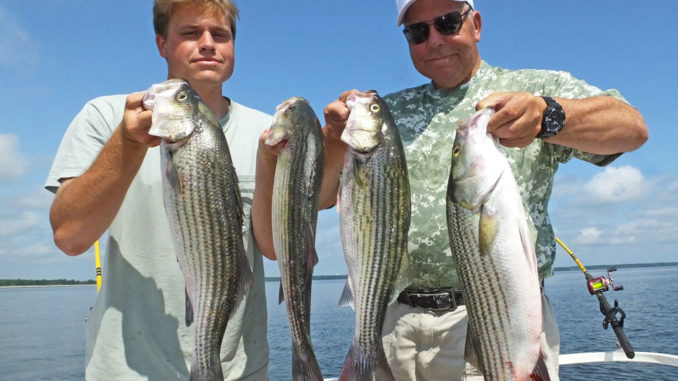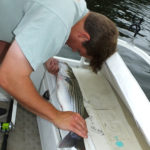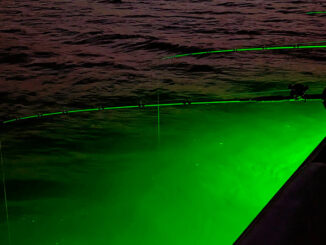
Anglers, guides, SCDNR feel good about changes
The new striper regulations implemented on the Santee Cooper lakes this past June have received rave reviews from fishermen, guides and landing operators around Lake Marion and Lake Moultrie. This has created a lot of optimism for the striper fishing season that reopens Oct. 1.
Anglers had a brief window to enjoy the long-awaited regulatory change when passed in early June before the season closed for the summer on June 15. The 23- to 25-inch slot limit, with one striper over 26 inches legal, immediately created more striper-fishing interest.
According to my contacts, this is one the most universally appreciated legislative actions for the Santee Cooper system fishery in years.
The father-son guide team of Bob and Bobby Winters from Cross, S.C., provide a perspective from a long-time guide and a newcomer to the business. The elder Winters said interest in striper fishing perked up immediately.
“The new slot limit is a big impact event in a positive way,” Bob Winters said. “I’ve been guiding for stripers since the 1970s and have seen a thing or two, and fishermen needed to be able to use this resource. Even with an abundant striper supply in recent years, fishermen were dealing with a situation where stripers could not be kept unless they were over 26 inches. Fish of those sizes were hard to come by, plus, that’s the size-class that fish biologists said we need to keep in the lake. Striper-fishing interest dwindled as a result, so this is a long-awaited and much-needed change.”
Bobby Winters said a new guide’s perspective on the fishery is that the future is brighter for striper fishing interests and will be a positive for the lake-influenced economy.
“I’m very excited about the new size limits, and I think October through late-fall will usher in great striper fishing and lots more interest from anglers,” he said. “We’re now able to utilize a size-class of fish present in large numbers, but with enough control to hopefully maintain the quality fishery for the future. Fishermen don’t mind catch-and-release on stripers if they can keep some and now we can.”
Live bait is great
Bobby Winters said striper fishing will likely be excellent when the season opens on Oct. 1.
“Typically, the action is very good on both lakes,” he said. “I often fish Lake Moultrie because of where I live, but if wind conditions are an issue, plenty of productive areas are available on Lake Marion.”
Winters (843-700-0626) said the best tactic to open the season is live-bait fishing and watching for topwater schooling action.
“Early in the season, the bread and butter tactic is to use electronics to locate stripers and drop live herring or gizzard shad to that depth or just above,” he said. “The weather always plays a big role, and we’ll be prepared for topwater schooling fish and will cast bucktails and various topwater lures to schooling fish. Topwater fishing usually gets better later in the month and into November.”
Winters said stripers may be in tight schools, so staying right on top of a school can be important. But if the fish are loosely packed over a large area drift fishing will be extremely effective.
SCDNR: Perspective is good
Feedback from the S.C. Department of Natural Resources’ perspective is positive as well. Chad Holbrook, who replaced retired Scott Lamprecht as regional fishing coordinator, said it’s too early to have any specific data on how the new regulation may impact the fishery, but thoughts are it will be good for fishermen and the resource.
“The sampling study SCDNR relies on to monitor the striped bass population occurs during December to February and has since 1985,” Holbrook said. “So from a biological perspective, we don’t have any information about how the new regulation is impacting the population. But I have not heard of any problems from law enforcement or from anglers from this past June, and that’s a positive sign. We want to encourage anglers to continue to follow the regulations while utilizing the resource.”
Holbrook said the SCDNR’s perspective is that the new regulations will continue to protect the adult spawning stock while allowing anglers to keep a few fish for dinner.
“One of SCDNR’s missions is to find a balance between managing the state’s natural resources and providing recreational opportunities for fisherman,” he said. “We believe the population is stable enough to allow some harvest of 23- to 25-inch stripers, and we are excited that fisherman can utilize these fish.”







Be the first to comment